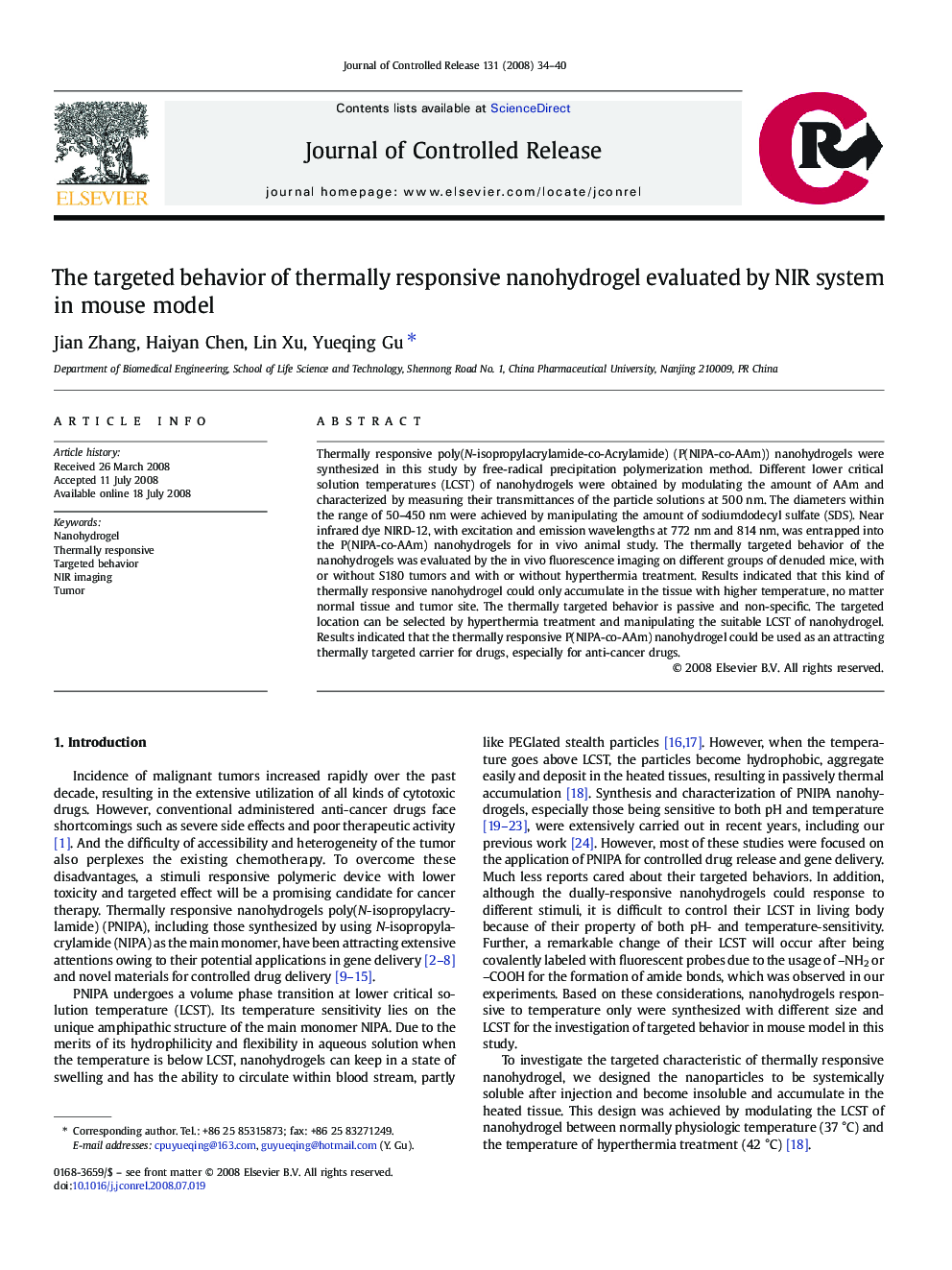| Article ID | Journal | Published Year | Pages | File Type |
|---|---|---|---|---|
| 1426471 | Journal of Controlled Release | 2008 | 7 Pages |
Thermally responsive poly(N-isopropylacrylamide-co-Acrylamide) (P(NIPA-co-AAm)) nanohydrogels were synthesized in this study by free-radical precipitation polymerization method. Different lower critical solution temperatures (LCST) of nanohydrogels were obtained by modulating the amount of AAm and characterized by measuring their transmittances of the particle solutions at 500 nm. The diameters within the range of 50–450 nm were achieved by manipulating the amount of sodiumdodecyl sulfate (SDS). Near infrared dye NIRD-12, with excitation and emission wavelengths at 772 nm and 814 nm, was entrapped into the P(NIPA-co-AAm) nanohydrogels for in vivo animal study. The thermally targeted behavior of the nanohydrogels was evaluated by the in vivo fluorescence imaging on different groups of denuded mice, with or without S180 tumors and with or without hyperthermia treatment. Results indicated that this kind of thermally responsive nanohydrogel could only accumulate in the tissue with higher temperature, no matter normal tissue and tumor site. The thermally targeted behavior is passive and non-specific. The targeted location can be selected by hyperthermia treatment and manipulating the suitable LCST of nanohydrogel. Results indicated that the thermally responsive P(NIPA-co-AAm) nanohydrogel could be used as an attracting thermally targeted carrier for drugs, especially for anti-cancer drugs.
